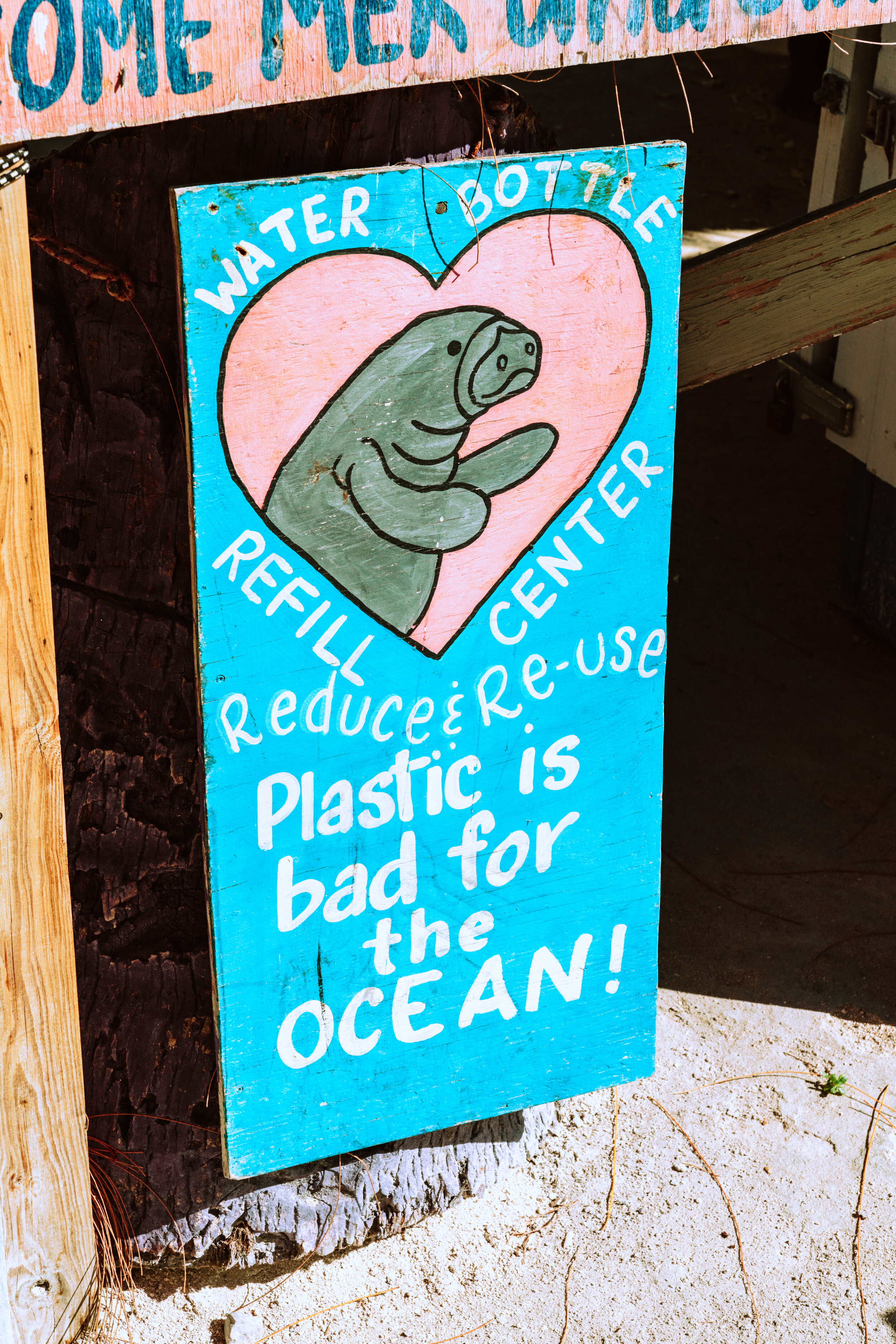“Do your little bit of good where you are; it’s those little bits of good put together that overwhelm the world.”
Within a city, a school consistently produces more waste than any other business or institution. One analysis found that students produced approximately ½ pound of waste while at school each day. Let’s work that math for one typical classroom:
Assuming 30 students/classroom*0.5 lb. of trash = 15 lbs. trash/day
15 lbs. trash/day*180 days/school year = 2700 lbs. trash/school year/Classroom
Note, that does not account for trash the student produces outside of school. That of course you do not have control over as a classroom teacher. However, you do have control over your own waste habits and a summer at home is a terrific time to start planning and practicing your own waste-less lifestyle so when school does open in the fall, you have already re-imagined your low-er waste classroom, have put structures into place and through classroom management, you will positively influence the waste habits of your students certainly while at school and arguably outside of school also. What power you hold!
Let’s get started, and a wise place to start on any journey is at the beginning. Your beginning. Where are you on a waste production spectrum today and where can you be by the end of summer? To help assess this, I’ve devised a 5-tier categorization of a person’s waste habits, not meant to label or pigeonhole but to allow self-reflection and to define your beginning. This highly unscientific categorization imagines a spectrum within each tier, as if there is room to grow within a tier and steps of waste reduction to achieve to move up to the next tier.
Still following?
Tier 1: No thought to waste. An individual who buys what they want and throws out waste without regard for where it ends up. They may or may not assume it is taken care of properly.
Tier 2: Convenience. An individual who understands that it’s best to reduce-reuse-recycle but typically practices only when convenient.
Tier 3: The Rule Follower. An individual who is aware that waste is a problem and has set up some structure to reduce waste production in their life, knows the local rules for recycling and recycles more often than not. They also have an understanding that reducing waste and reusing materials surpasses recycling on the scale of low-er waste habits.
Tier 4: Rethink. An individual who rethinks their purchasing decisions to proactively reduce waste. Systems for waste reduction are set at home and recycling is practiced but is recognized as just one step up from sending waste to the landfill. Ideally the best strategy is to create as little waste as possible from the start.
Tier 5: The Advocate. This person has practiced a low-er waste lifestyle for some time, even going so far as to review companies about their packaging, boycotting certain brands; they may sign petitions and advocate for systemic changes on the production side (rather than the consumer side) of waste reduction.
Where do you think you land on this scale? I’m a solid tier 4 but I could always revisit tier 3 and my local recycling rules (as they can change) and I’ve dipped my toe into tier 5. Regardless of where you land, there is always room for improvement.
I am advocating that you spend this summer, improving upon your own waste habits so that when school starts again in the fall you can reimagine your classroom to reflect your new low-er waste habits! Below I share some tips for how to move up within a tier or take it to the next level. In July, I’ll write about ways you can practice sustainability as part of your classroom management. If you hang with me, in August I’ll give a detailed account of why it is becoming more and more IMPERATIVE to make this a part of all classroom structures, regardless of subject taught or age group.
Tier 1. There is actually so much you can do, what I would hate to hear is that you got overwhelmed with the task and just gave up. We don’t need everyone to live perfectly waste free, we need lots and lots of people to waste LESS. So, start by setting up an easy system for recycling. Start with the obvious: glass and plastic bottles, aluminum cans, and paperboard food boxes. Note: Whatever you recycle has to be clean. No pizza grease on the box, no crumbs, so soda, no ketchup. Rinse them out! What can you recycle beyond that has a lot to do with where you live, so start with what I listed above, get a hang of that, then move on when you feel ready and capable. I have an easy access bin in my garage so we sort recyclables from trash throughout our day.
Tier 2. Basic recycling may already be happening at home so maybe it’s time to step it up. Research your local government’s waste management plan to access a list of what can and cannot be recycled. Pay attention to what your favorite grocery store collects (maybe plastic bags, batteries, eye glasses, cell phones?) I reuse a yogurt container to store old batteries and recycle the whole bin when full. To reduce toxic battery waste, I now wait for sales on rechargeable batteries so our battery disposal problem isn’t the problem it used to be & in the long run, we’ve saved a lot of money. Buy a good quality water bottle for everyone in the house. Make this the summer you stopped buying bottled water! Make sure reusable bags are in the car for shopping trips. If you cut plastic bottles and bags out even just 50% of the time this summer, you’d be making a BIG impact on your waste production.
Tier 3: I really stepped up my plastic waste reduction when I bought reusable produce bags! It might also be time to rethink your plastic storage bag and plastic wrap use. I started by washing used storage bags, then found cloth and silicone replacements. I’ve started to save glass jars and plastic containers my food is packaged in for food storage and realized if I stop buying plastic wrap, I get creative with what to use instead. I don’t miss it anymore. I do keep a stash of plastic storage bags hidden from my children and use when nothing else will do, but the last time I restocked that box was over a year ago.
Tier 4. Are you composting at home yet? I have recently expanded my compost system at the house and I’ve started to make more products at home to avoid excess packaging. I make my own soup broth and try to avoid canned beans by making my own. I’ve found a shave gel recipe that I LOVE and want to get in the habit of making hummus and bread more often from scratch, reducing the plastic packaging that comes with those purchases. I have to say, the homemade versions of these often taste better, work better and end up being cheaper on top of being low-er waste!
Tier 5. At any tier we can take what we do at home and incorporate those practices at work. If you are this far along in your waste reduction practice, that is especially true for you. It seems to hold true that those who lead through example influence more minds than those who thrust their lifestyle or opinions on others. Make yourselves available for council and know I appreciate your efforts!
I appreciate everyone for reading this far and for even considering a new habit to work on this summer! I would love to chat with anyone who has questions or wants to know more about my strategies and efforts. I also want to hear your ideas for low-er waste life-hacks. Can you leave a comment below? I’ll be back in July with a more directed focus on applying these habits to a classroom setting. In the meantime, do your little bit of good with what you’ve got; I’d never expect more than that from anyone! Thanks for reading, Rachel
Styrofoam on the beach. Learn more about waste in our ocean by watching the documentary “A Plastic Ocean” available on Netflix.
Oh man, it feels like I left so much out…..reducing our use of straws and plastic utensils, so little about composting; I glossed over the concept of waste itself in the production of goods and the massive plastic pollution problem we face globally! There is so much, how do you fit it all in? You don’t, which is why I’m adding these links. And no, I do not work for Earth Hero, but I do love their online store, which is why I chose to link their products so often in this post.



